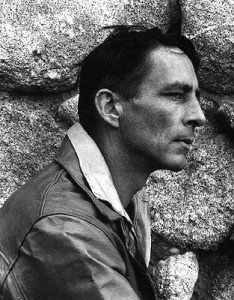 Born in Pennsylvania at the end of the 19th Century, John Robinson Jeffers was a narrative and epic poet who believed you needed to dehumanize in order to explore the bigger picture. His father was a minister and his brother later went on to become a respected astronomer. Jeffers was always academically gifted and his mother and father always supported his forays into poetry.
Born in Pennsylvania at the end of the 19th Century, John Robinson Jeffers was a narrative and epic poet who believed you needed to dehumanize in order to explore the bigger picture. His father was a minister and his brother later went on to become a respected astronomer. Jeffers was always academically gifted and his mother and father always supported his forays into poetry.
From a young age he was interested in the classics of Greece and Rome and studied both the languages and the literary greats of that time. After graduating from the Occidental College, Jeffers moved onto university in South California where he began studying literature and then moved onto medicine. He showed early green credentials before it ever became fashionable and developed a growing concern for the environment and shortly after that, moved to Seattle to study forestry, though he never finished the course.
Back in California, he married Una Kuster whom he had met whilst at University and they settled in Carmel. He built a granite house for his family and quickly became known as a rugged outdoors type who drew his poetry out of the wilderness he loved so much. His epic poems were undoubtedly influenced by his affinity to the Greek classics and were imbued with incest and murder that shook up North American literary society.
In epic poems such as Tamar, Jeffers revealed his strong relationship with the wilderness and his dislike of what civilized man had done to it.

Tamar and Other Poems, published in the 1924, received a lukewarm reception initially, particularly in the West, and it wasn’t until the collection reached the East of America that it began to receive some level of critical acclaim. One of his enduring themes, that man was a self-centered being who was doing severe damage to the natural world with all its beauty and mystery, formed the basis for what later came to be called in-humanism.
In 1927 he wrote and published his longest narrative poem The Women at Point Sur which contained strong sexual themes and violence and offended many of the critics of the day. Jeffers himself believed it was one of his best works and did so until the day he died. The 20s and 30s, though a time of huge political upheaval across the world, was also a very productive time for Jeffers who wrote several collections including a number of shorter poems. He explored the notion that great the beauty demanded large tragedies.
Having read widely in philosophy, science, environmentalism and religion, Jeffers believed that man had been deserted by a God that no longer cared and that the only solution was to turn away from damaging emotions, such as hate and love, and embrace a state of non-caring or detachment. His in-humanist philosophy as it was known led to him being classed as a nihilist.

By 1932 Jeffers’ fame had spread far enough for his picture to be on the front of Time Magazine. As World War II loomed though, his popularity began to wane as he opposed the entry of America into the conflict and came to be seen as unpatriotic for his apocalyptic views and references in his poems to Pearl Harbor, Hitler and Stalin.
Whilst he never took a step back from his views, his popularity never really recovered until after his death and for a while he was more popular outside of the United States than at home. He published poems after the war but without much success and he died in 1962 at the age of 75. He was cremated and his ashes scattered over his beloved home in Carmel.

